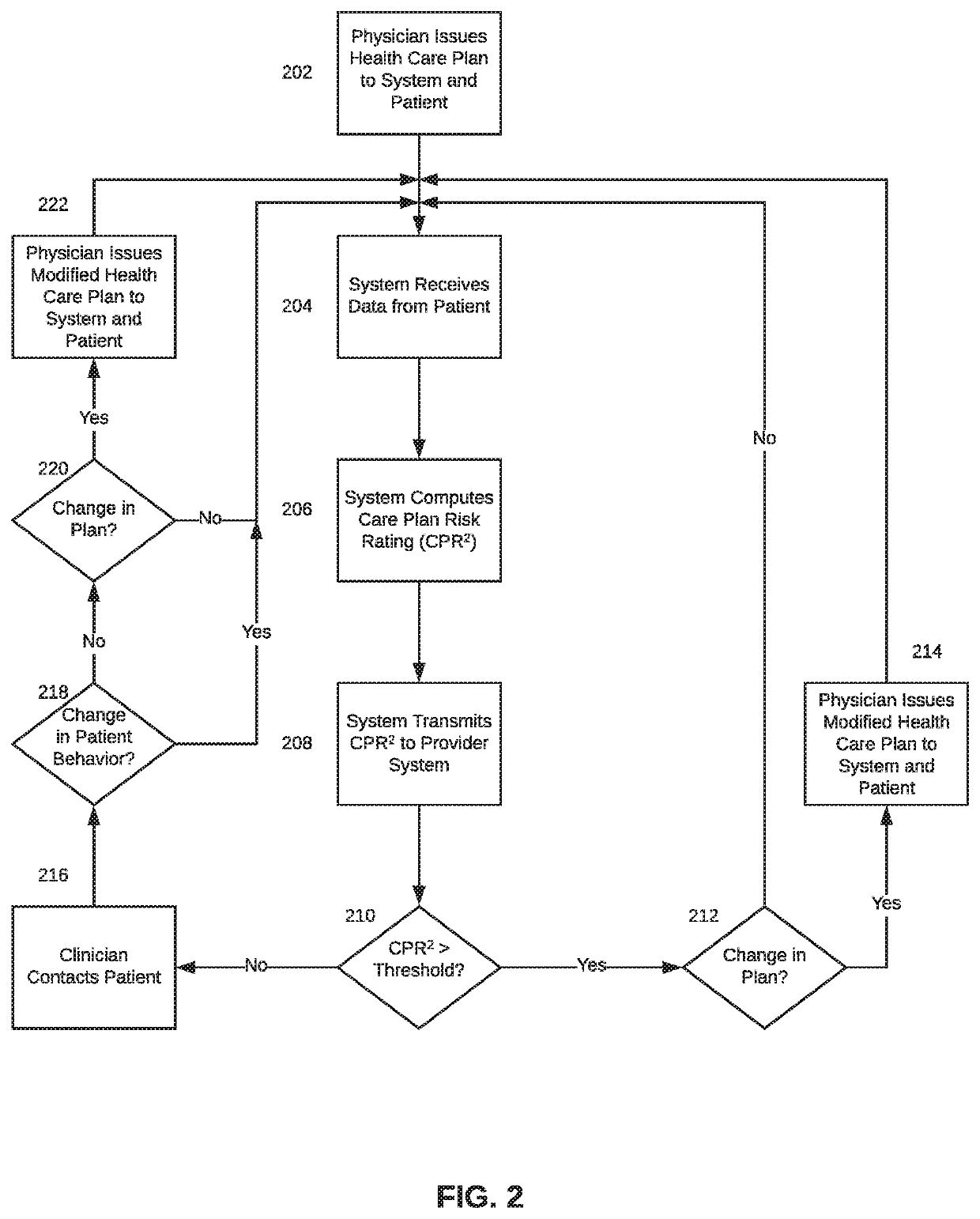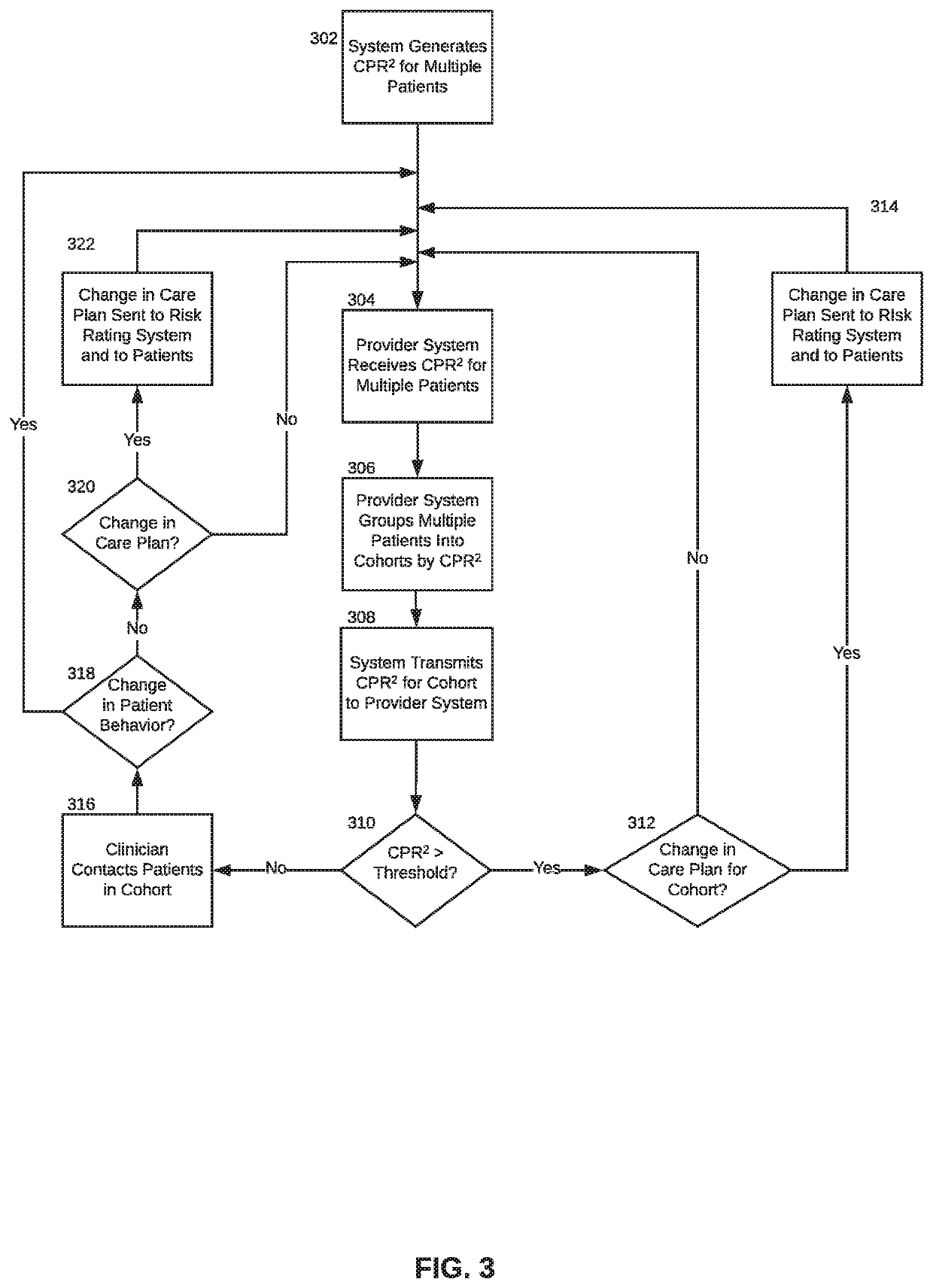Method, apparatus, and system to manage patient treatment
a patient treatment and patient technology, applied in the field of patient treatment facilitation, can solve the problems of inconsistent follow-up process and time-consuming, and achieve the effect of increasing the amount of data and improving the decision-making ability
- Summary
- Abstract
- Description
- Claims
- Application Information
AI Technical Summary
Benefits of technology
Problems solved by technology
Method used
Image
Examples
Embodiment Construction
[0016]In the following description, for ease of reference a physician or a clinician may be referred to as one or the other. Such reference should be understood as being applicable to either. Also in this description, unless called out otherwise, a “provider” will refer to a larger organization that may employ a plurality of physicians and / or clinicians.
[0017]In one aspect, determining a CPR2 value starts with patient data. In an embodiment, a patient may enter data into an app (for example, on a mobile device such as a smartphone or tablet), or into a desktop or notebook computer (for example, via a Web-based portal). The data that the patient enters may be responsive to questions relating to the patient's care plan. The questions may fall into a number of categories, including but not limited to prescriptions, other medication, nutritional supplements, diet, exercise, physical therapy, office visits, imaging, laboratory work, and the like. This list is not intended to be exhaustiv...
PUM
 Login to view more
Login to view more Abstract
Description
Claims
Application Information
 Login to view more
Login to view more - R&D Engineer
- R&D Manager
- IP Professional
- Industry Leading Data Capabilities
- Powerful AI technology
- Patent DNA Extraction
Browse by: Latest US Patents, China's latest patents, Technical Efficacy Thesaurus, Application Domain, Technology Topic.
© 2024 PatSnap. All rights reserved.Legal|Privacy policy|Modern Slavery Act Transparency Statement|Sitemap



